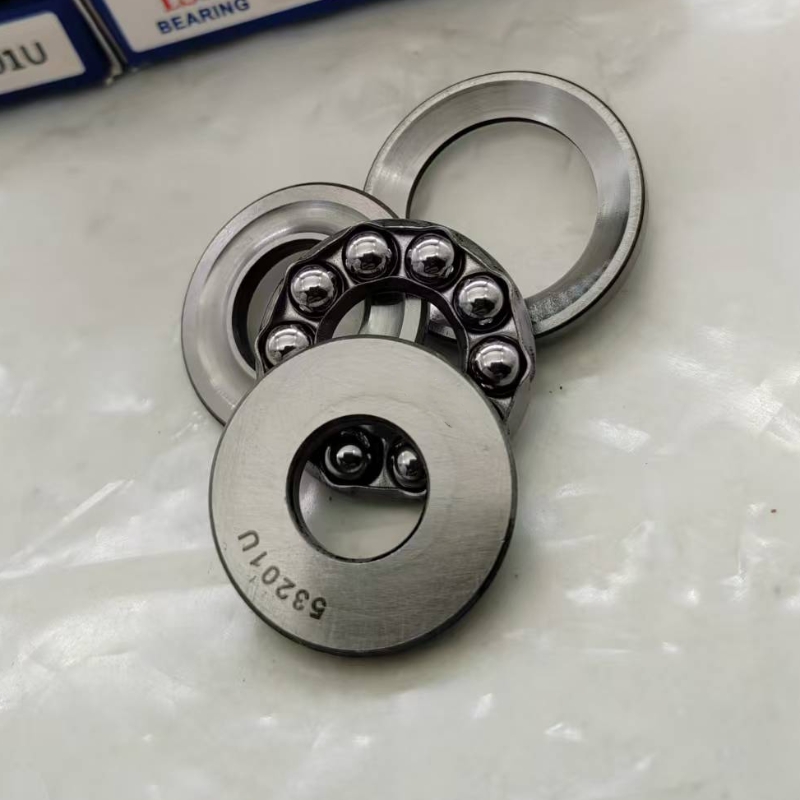CONTACT US
Zhejiang waxing electromechanical co.LTD.,Factory located in Shandong,Headquarters located in Zhejiang,China.
Thrust ball bearings: key components for efficient and stable mechanical transmission
1. Understanding thrust ball bearings
As the name suggests, thrust ball bearings are mainly responsible for thrust. They are a type of split bearing, mainly composed of three parts: seat ring, shaft ring, and steel ball cage assembly. The shaft ring is like a loyal guard, tightly fitting with the shaft and always following the rotation of the shaft; the seat ring cooperates with the housing tacitly to provide stable support for the entire bearing. The steel ball cage assembly is like a coordinator, allowing the steel balls to be arranged in an orderly manner and maintain appropriate spacing to ensure that they do not collide with each other when rolling, thereby achieving efficient operation.
2. The uniqueness of thrust ball bearings
(I) Type classification and characteristics
Thrust ball bearings can be divided into one-way thrust ball bearings and two-way thrust ball bearings according to the force. One-way thrust ball bearings, like a dedicated guardian, can only bear one-way axial load. Imagine that in the working scene of a crane hook, the gravity on the hook is a one-way axial force, and the one-way thrust ball bearing can perfectly cope with it, steadily bearing this force and ensuring the normal operation of the hook.
The bidirectional thrust ball bearing is more powerful. It can bear bidirectional axial loads like an all-round warrior. For example, in the propeller shaft of a ship, the shaft will be subjected to axial forces from different directions during operation. The bidirectional thrust ball bearing can easily resist and ensure the stable operation of the propeller shaft.
In addition, the bearing with a spherical mounting surface of the seat ring also has a magical self-aligning performance. It is like a flexible dancer, which can automatically adjust its posture according to the actual situation and reduce the impact of installation errors. Even if there are some small deviations during the installation process, it can keep the bearing in good working condition through its own self-aligning function, greatly improving the adaptability and reliability of the bearing.
2) Advantages of materials and processes
Thrust ball bearings also have many advantages in materials and processes. First of all, in terms of materials, it uses ultra-clean steel, which is extremely pure and has very few impurities, just like the elite that has been screened through layers of screening, which can extend the life of the bearing by up to 80%. The reduction of impurities reduces the risk of wear and fatigue, allowing the bearing to work more durable and stably.
Grease technology is also a highlight. Taking NSK's lubricant technology as an example, it is like injecting vitality into the bearing, which can extend the life of the grease and improve the performance of the bearing. When the bearing runs at high speed, high-quality grease can effectively reduce friction, reduce temperature, and prevent direct contact between metal surfaces, thereby extending the service life of the bearing and making the bearing run more smoothly.
The use of high-quality steel balls makes the thrust ball bearings quiet and smooth at high speeds. These steel balls are like well-trained athletes, with smooth surfaces and high precision. They produce almost no noise during rolling, ensuring the quietness of mechanical operation and improving the overall quality of the equipment.

Copyright © 2025 Zhejiang waxing electromechanical co.LTD. | All Rights Reserved Design
Hello, please leave your name email or WhatsApp here before chat online so that we won't miss your message and contact you smoothly.